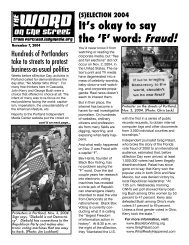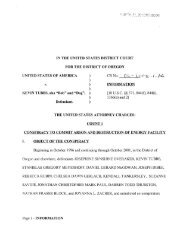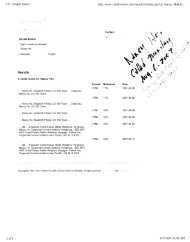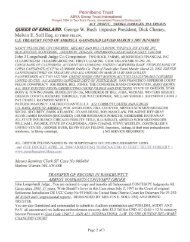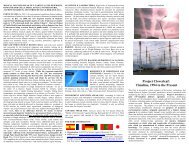Setting Fires With Electrical Timers
Setting Fires With Electrical Timers
Setting Fires With Electrical Timers
You also want an ePaper? Increase the reach of your titles
YUMPU automatically turns print PDFs into web optimized ePapers that Google loves.
Terminology<br />
ACCELERANT – A substance, usually a liquid, which releases tremendous heat when it burns. Accelerant acts<br />
like a shot of adrenaline: it dramatically increases the pace of destruction. Petroleum products such as gasoline,<br />
diesel and kerosene are very powerful accelerants.<br />
IGNITER – The intermediate component between a timer and the accelerant. The igniter creates a hot flame when<br />
triggered by a spark, a smoldering ember, an electric current or some other heat source coming from the timer.<br />
The igniter must burn long enough and hot enough to set the accelerant on fire.<br />
TIMER – Chemical, mechanical or electronic mechanism that causes a time delay before a fire erupts. Examples<br />
include fuses, candlewicks, cigarettes, incense, modified kitchen timers, and modified alarm clocks.<br />
INCENDIARY DEVICE – A system consisting of an igniter and a timer and a quantity of accelerant.<br />
PREMATURE IGNITION – The potentially dangerous situation when an incendiary bursts into flame before it is<br />
supposed to. (Usually followed by the words, “Oh shit!”)<br />
Four Rules of Arson<br />
1) Most of the heat from a fire rises. Convection currents cause flames and heat to travel upwards. When<br />
choosing locations for accelerant, consider the path of rising heat as the accelerant burns. Get as much of that<br />
rising heat into the “target area” as possible. The target area is that part of the building or vehicle which is<br />
most vulnerable to fire. (For most buildings, the target area is the attic and its rafters, as described in the next<br />
section.)<br />
2) The heat needs to be concentrated in one place. It is counterproductive to disperse the accelerant. Contain<br />
the accelerant by keeping it in a 5-gallon bucket or other container. Hollywood movies often show people<br />
splashing gasoline everywhere before setting a fire. This creates a nice special effect as flames leap up all<br />
over the place. However, the heat is dispersed which makes it less likely that solid wood will absorb enough<br />
heat (energy) to catch fire and stay on fire.<br />
3) The heat needs to be sustained over a period of time. As an object is exposed to heat, more and more of<br />
that energy will be absorbed over time. The temperature of that object will eventually reach the point where<br />
combustion (fire) can occur. A momentary flash of intense heat, like a ball of fire, is not as likely to transfer<br />
sufficient heat to the object as would a steady flame. For example, you won’t be burned if you move your<br />
hand quickly through a candle flame. This is not true if you hold your hand still in the flame. Even very high<br />
temperatures can be rendered ineffectual if there isn’t enough time to transfer sufficient heat. This occurs with<br />
gasoline which burns hot and fast. Diesel is added to gasoline to slow down the burn rate.<br />
4) Guarantee destruction of the target through careful planning and execution. Take no shortcuts. Do<br />
thorough reconnaissance to eliminate surprises. Make contingency plans for anything that could go wrong. Do<br />
extensive testing of timers and igniters. Use multiple incendiary devices with generous amounts of accelerant.<br />
Never be satisfied with possible destruction or probable destruction. The objective of every action should be<br />
assured destruction. The risks are too high for anything else.<br />
4




